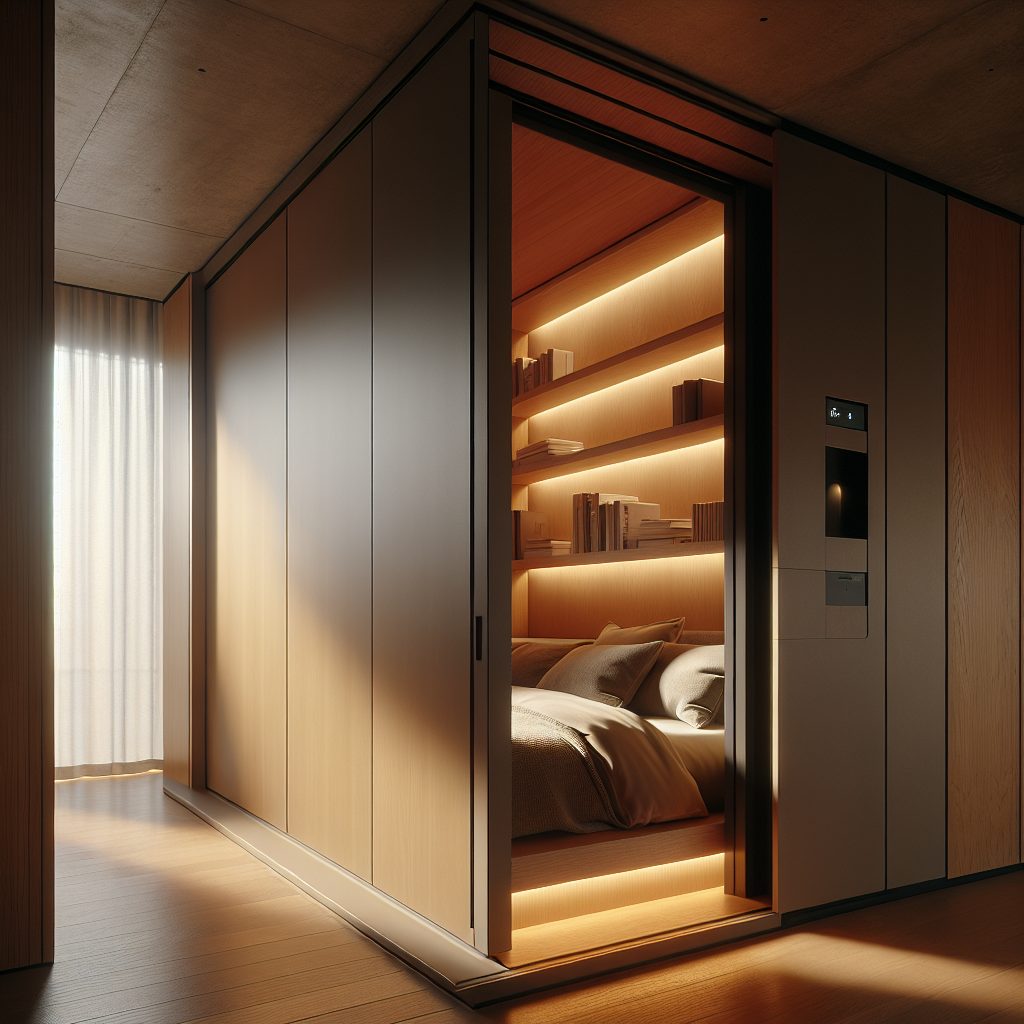The Importance of Acoustic Comfort in Interior Design

The Symphony of Silence: Elevating Acoustic Comfort in Interior Design
Imagine stepping into a space where the hum of conversation, the clinking of cutlery, and the gentle rustle of movement coalesce into a serene soundscape. This is the essence of acoustic comfort, a pivotal yet often overlooked element in the realm of interior design. In the pursuit of aesthetic excellence, the auditory experience within a space commands equal attention. After all, the most visually stunning environments can fall short if they are acoustically discordant.
The design community has long recognized the importance of visual balance, textural harmony, and ergonomic functionality. Yet, the quest for acoustic optimization is gaining momentum, emerging as a critical component in crafting spaces that are not only beautiful but also conducive to well-being and productivity. As we delve into the intricacies of architectural acoustics, we uncover the subtle art of sound design—a field that orchestrates the quietude and resonance of our surroundings.
Composing the Acoustic Environment: The Role of Sound in Spatial Experience
The interplay of sound within an interior can profoundly affect human behavior, emotions, and health. A cacophony of noise can elevate stress levels, disrupt communication, and impede concentration. Conversely, a harmoniously tuned environment can foster tranquility, enhance social interaction, and boost cognitive function. It is within this context that designers and architects are increasingly incorporating soundproofing solutions and acoustic treatments into their blueprints.
Sound-absorbing materials play a pivotal role in mitigating unwanted noise. From plush carpets that dampen footsteps to acoustic panels that absorb echoes, these materials are integral to creating a soundscape that is both pleasant and purposeful. Furthermore, the strategic placement of furniture, the use of soft furnishings, and the selection of wall coverings can all contribute to the acoustic signature of a space.
Sound Strategies: Techniques for Achieving Acoustic Bliss
Achieving acoustic comfort requires a multifaceted approach, blending aesthetics with science. One such technique is the implementation of sound zoning, which involves creating distinct auditory areas within a larger space. This can be accomplished through the use of partitions, room dividers, and even vegetation, which can act as natural sound barriers.
Another effective strategy is the integration of sound masking systems, which emit a subtle background noise to neutralize distracting sounds. This technology is particularly beneficial in open-plan offices and commercial spaces, where privacy and concentration are paramount. Additionally, the orientation and shape of a room can influence its acoustics, guiding designers to consider the geometry of spaces in their plans.
The art of acoustic design in open-plan spaces, for instance, is a testament to the creative solutions that can be employed to address the unique challenges these environments present. By combining absorptive materials, soundscaping, and innovative design elements, designers can craft spaces that are both visually open and acoustically intimate.
Case Studies: Acoustic Comfort in Action
The proof of acoustic comfort’s importance lies in its real-world applications. Consider the transformation of a bustling restaurant into an oasis of calm, where patrons can savor their meals and converse without straining their voices. Or the redesign of a library, where the hushed atmosphere invites contemplation and study. These scenarios exemplify the tangible benefits of prioritizing sound design.
In the realm of hospitality, hotels such as the Quiet Room® label have set new standards for acoustic comfort, ensuring that guests enjoy a restful stay devoid of intrusive noise. Educational institutions, too, have embraced acoustic advancements, recognizing that optimal learning environments are not just visually stimulating but also acoustically supportive.
Acoustic Comfort: A Key Ingredient in Sustainable Design
Beyond the immediate sensory benefits, acoustic comfort aligns with the broader principles of sustainable design. By utilizing eco-friendly materials and energy-efficient soundproofing techniques, designers can contribute to the creation of spaces that are not only acoustically sound but also environmentally responsible.
The intersection of acoustics and sustainability is evident in projects that have achieved the coveted LEED certification, where acoustic performance is considered alongside other green building criteria. This holistic approach underscores the interconnectedness of our sensory experiences with the health of the planet.
Future Harmonies: The Evolution of Acoustic Comfort
As we look to the future, the importance of acoustic comfort in interior design is poised to grow. Innovations in materials science, digital sound modeling, and building information modeling (BIM) are expanding the possibilities for acoustic customization, allowing designers to fine-tune environments with unprecedented precision.
The ongoing dialogue between designers, acousticians, and end-users is fostering a deeper understanding of the role sound plays in our lives. Through collaboration and innovation, the design community is set to compose the next chapter in the symphony of silence, crafting spaces that resonate with the needs and desires of those who inhabit them.
As we embrace the silent symphony of well-designed spaces, let us not forget the words of the great architect Louis Kahn: “A room is not a room without natural light.” In the same vein, a space is not truly complete without considering its acoustic character. The pursuit of acoustic comfort is not merely a technical challenge but a celebration of the senses, an ode to the quiet moments that define our experience of space.








